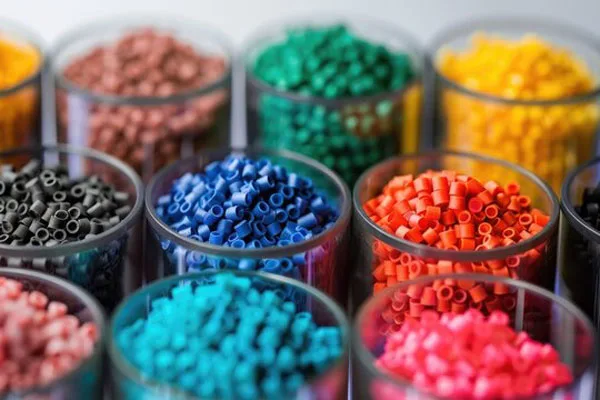In rapid prototyping, where innovation takes shape at lightning speed, materials are the alchemists’ elements, the sorcerers’ spells. They can transform a mere concept into a tangible reality, breathing life into your designs and dictating their destiny.
But with many materials vying for your attention, how do you choose the perfect concoction for your specific needs?
Fear not, fellow creators! At NICE Rapid, we’ve mastered the art of material selection, guiding countless businesses through the labyrinth of options to find the perfect match for their prototyping endeavors. Consider this your ultimate guide, a treasure map leading you to the materials that will unlock your design’s true potential.
Key Material Categories: A World of Possibilities
Like a painter’s palette bursting with vibrant hues, the world of rapid prototyping materials offers diverse options, each with unique characteristics and applications. Let’s explore the key categories:
1. Plastics: The Versatile Virtuosos
Plastics reign supreme in rapid prototyping, from the ubiquitous ABS and PLA to the robust nylon and polycarbonate. Their versatility, cost-effectiveness, and ease of processing make them ideal for various applications.
- ABS: A workhorse known for its strength, impact resistance, and affordability, perfect for functional prototypes and concept models.
- PLA: A biodegradable option with a smooth finish, often used for visual prototypes and low-stress applications.
- Nylon: A durable choice with excellent wear resistance, ideal for parts that require flexibility and strength.
2. Metals: The Unwavering Champions
When durability and strength are paramount, metals step into the spotlight. Aluminum, stainless steel, and titanium offer unparalleled performance for demanding applications.
- Aluminum: Lightweight yet strong, aluminum is a popular choice for functional prototypes, particularly in the aerospace and automotive industries.
- Stainless Steel: Resistant to corrosion and high temperatures, stainless steel excels in applications where durability is critical.
- Titanium: The ultimate champion of strength and biocompatibility, titanium is often used for medical implants and high-performance components.
3. Resins: The Masters of Detail
Resins are the artisans of choice for prototypes that demand intricate details and flawless finishes. Epoxy, polyurethane, and silicone each bring unique properties to the table.
- Epoxy: Known for its high strength and excellent detail reproduction, epoxy is ideal for creating master patterns and molds.
- Polyurethane: Offering a wide range of hardness and flexibility, polyurethane is used for casting, molding, and creating durable prototypes.
- Silicone: With its exceptional flexibility and ability to capture intricate details, silicone is perfect for creating molds and prototypes with complex geometries.
4. Composites: The Synergistic Blends
Combining the best of different worlds, composites offer a unique blend of properties. Composites achieve exceptional strength-to-weight ratios and tailored performance characteristics by fusing materials like carbon fiber and fiberglass with resins.
Factors to Consider: Navigating the Decision Matrix
Choosing the right material is like assembling a puzzle, where each piece is crucial in completing the picture. Consider these key factors:
- Functionality: Will your prototype be subjected to stress, impact, or wear and tear? Choose materials that can withstand the demands of its intended use.
- Aesthetics: Is visual appeal a priority? Consider materials with the desired color, texture, and finish to represent your final product accurately.
- Prototyping Process: Different processes require different materials. Ensure compatibility between your chosen material and the prototyping method (3D printing, CNC machining, etc.).
- Cost and Availability: Balance your budget with your material requirements, considering both cost and lead times.

Plastic materials
NICE Rapid’s Material Expertise: Your Guiding Light
Lost in the sea of material choices? Fret not! At NICE Rapid, we’re your seasoned navigators, guiding you toward the perfect materials for your prototyping voyage. Our extensive inventory boasts a treasure trove of options:
- Plastics: A vast selection of ABS, PLA, nylon, polycarbonate, and more, catering to every need and budget.
- Metals: From the lightweight agility of aluminum to the unwavering strength of stainless steel and titanium, we offer metals that conquer any challenge.
- Resins: A diverse range of epoxy, polyurethane, and silicone resins, capable of capturing the most intricate details and complex geometries.
- Composites: Unleash the power of synergistic blends tailored to your specific needs for strength, weight, and performance.
But our expertise goes beyond simply offering a vast selection. Our experienced engineers delve deep into your project requirements, understanding your goals, functionalities, and aesthetic desires. We then leverage our knowledge to recommend the optimal materials, ensuring your prototype looks the part and performs flawlessly.
Need a helping hand in navigating the material maze? Our expert consultations provide personalized guidance, helping you make informed decisions and avoid costly missteps.
Materialize Your Vision with Confidence
Choosing the right materials is the cornerstone of successful rapid prototyping. It’s the bridge that connects your innovative ideas to tangible realities. By understanding the nuances of different materials and leveraging expert guidance, you can ensure your prototypes are not just physical manifestations but true embodiments of your vision.
Ready to embark on your material selection journey? Contact NICE Rapid today. Let our expertise guide you toward the perfect materials to transform your concepts into remarkable realities.
